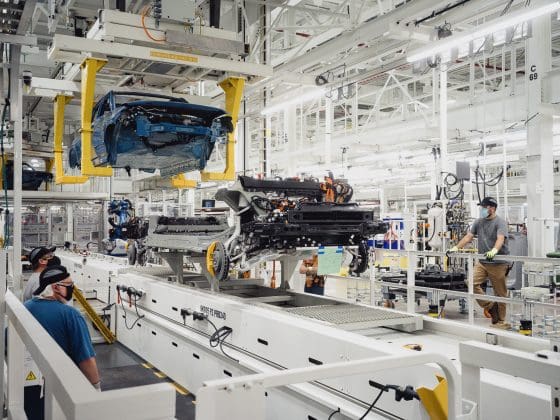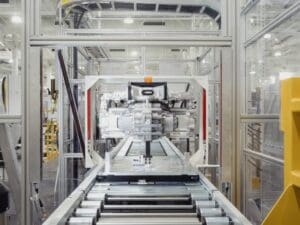
Rivian Automotive’s (Rivian) fall from grace has been swift and brutal. The US-based electric vehicle (EV) manufacturer has seen its valuation decline from a peak of US$158.5 billion in November 2021 to just over US$20 billion today. To put that value into context, Rivian was worth, at its peak, roughly the same as the entire value of United Parcel Service — the largest shipping and logistics company in the world. It has since evaporated to the equivalent value of Honeywell International or the combined value of WM, formerly known as Waste Management, and Boeing in less than six months.
It is shocking to think that investors could value an EV startup with negligible sales and 2022 production guidance of just 25,000 vehicles as more than some of the world’s most influential and storied corporations. Love it or hate it, Tesla at least produces cars, books billons in net income per year, and has the highest operating margin of any automaker in the world. In Q1 2022, Tesla produced and delivered around 9000 cars per week for a profit.
The latest news sending Rivian stock tumbling was the end of its initial public offering (IPO) lockup period. To add stability to financial markets, early inside investors are prevented from selling stakes in companies that become public for a period of usually six months. Amazon and Ford each have more than a 10% stake in Rivian that they’ve had to write down in recent months as the value of Rivian has collapsed. Yet even after that collapse, Ford decided on Monday, after the lockup period ended, to sell US$214 million worth of stock, reducing its position to a 10.5% stake. The sell-off cuts confidence in Rivian even further if an inside holder is willing to sell such a sizeable chunk of the company even after it has lost so much of its value.
A Tough Road Ahead
Like many companies in the auto industry, Rivian is in for a world of pain in 2022. The auto industry has been reeling from the globally congested supply chain. Legacy automakers looking to increase EV output have strained the supply of lithium and nickel. The result is a one-two punch of pressuring an already fragile supply chain, which makes it much harder for pure-play EV companies like Rivian to procure parts and components for an affordable price and get vehicles off the production line.

Unsurprisingly, Rivian cut its earlier full-year 2022 production guidance from 50,000 units down to its current 25,000 units. The company continues to lose billions as it invests in facilities, its people, and its technology. In December, Rivian announced a US$5 billion investment in a second manufacturing plant in Georgia.
On one hand, the investments are needed for Rivian to scale and meet customer demand. It has more than 100,000 orders from Amazon for its electric delivery van (EDV) by 2025. It also has more than 70,000 pre-orders for its R1T electric pickup truck and its R1S electric SUV. But Rivian is racing against the clock.
Inflation is rippling through the global economy. Rising interest rates increase the cost of money and make auto financing more expensive, which in turn reduces consumer demand for new vehicles. Throw in a potential recession, and it’s clear to see that Rivian is attempting to grow its business at one of the worst times to do so in the last few decades.
Doomed To Fail?
Given all of the headwinds discussed, does that mean that Rivian is doomed to fail? Probably not. But, Rivian is one of thousands of unprofitable growth companies that have seen their valuations re-rated in the last few months, many of which have seen haircuts of 80% or higher. It’s not Rivian’s fault, it’s more so the game that financial markets like to play as institutional ownership bounces between risky assets and safe ones in an attempt to strain retail investors and concentrate interests in the hands of the few.
What Rivian Has Going For It
Rivian originally intended to deliver vehicles in 2021 but was delayed due to supply chain challenges and the global chip shortage (see “‘Super Crazy Supply Chain Shortages,’” Fourth Quarter 2021 ESG Review, p. 2). It is years from profitability or positive free cash flow (FCF). But it did raise about US$12 billion in cash from its IPO, which will provide the means to expedite its manufacturing and distribution.
Rivian has also carved out a niche segment of the EV industry — outdoor activities. Its R1T truck is a mix between a Ford F-150 and a Jeep Wrangler. The R1T’s off-road capabilities, rugged design, impressive performance, and US Environmental Protection Agency (EPA)-estimated rated range of more than 310 miles (499 km) makes it a unique offering that few companies will be able to compete with anytime soon.
The company’s R1S model is an SUV that can do everything from day-to-day functions to cross-country road trips, to sports and outdoor activities. Like the R1T, it also packs and EPA-estimated range of more than 310 miles. Both the R1T and R1S start at under US$70,000, which puts them in the same class as other luxury vehicles, enhanced trucks, and Jeeps.
Rivian’s all-electric delivery van is yet another model with a lot of potential. Rivian intended to begin delivering vans to Amazon in late 2021 but is now expected to begin mass delivery sometime in 2022. After its IPO, the company announced that it would sell delivery vans to other companies, not just Amazon, in 2022 and begin delivering them in 2023. Given the ESG initiatives of package delivery companies like FedEx and United Parcel Service, as well as private fleets, Rivian’s delivery van might have the most value of any of its models.

Rivian is also developing the Rivian Adventure Network, which is a network of nationwide charging stations. Rivian’s outdoor and off-the-grid focus sounds cool in theory, but it can’t work under the current charging network. The company recognizes this barrier, and realizes it’s going to have to build a network itself for its sales pitch to land. The US$7.5 billion earmarked toward EV charging from the bipartisan infrastructure bill is intended for urban areas that need charging, not remote places for campers. Rivian’s decision to build its own chargers will take a chunk out of its capital, but it’s a necessary step to convince buyers that its vehicles are worth it.
In sum, Rivian has a lot of cash and a head start on the competition. It also has few threats given that it doesn’t really compete with the Ford F-150 Lightning or any of Tesla’s existing models, not even the yet-to-be-built Cybertruck.















